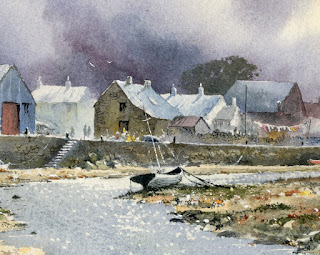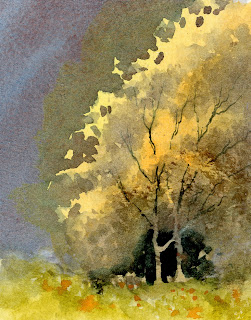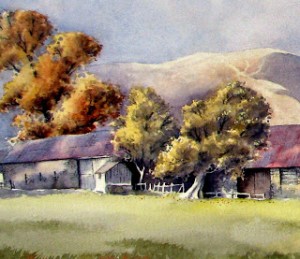Many folk ask why I didn’t use masking fluid in a demonstration painting where I needed to reserve white areas, and this is a constant source of concern to artists. Often the decision depends on how you feel about the use of the fluid, and in my case I normally only use it when there are intricate details in white, or a light tone.
In this detail of a watercolour of the old harbour at Fishguard I made quite extensive use of masking fluid on the roofs and chimneys, the clothesline, steps and white highlights on the water. This allowed me to brush the sky wash vigorously across the paper and over the tops of the roofs, and later to apply the dark washes over the harbour wall and steps and the background to the clothesline without having to fiddle. The same applied to the sparkling water where I used cobalt blue.
I sometimes work round these features to create the negative shapes, but this can make the background appear overworked or splotchy, and take away the freshness. However, developing your skills at negative painting is invaluable, and is an excellent alternative to masking fluid. You will notice in this painting that there are tiny white features such as gulls, masts and ropes hanging from the harbour wall. These were rendered with white gouache, as I prefer this where the feature is so thin that masking fluid can appear clumsy. Gouache is also really effective for tidying up bits that haven’t quite worked.
I hope you all have a great festive season, and maybe Santa has left you an arty treat in your stocking to help get you going again with your painting. I shall try and snatch a few moments in the great outdoors with my paintbrushes. May you have much success with your painting in 2017



